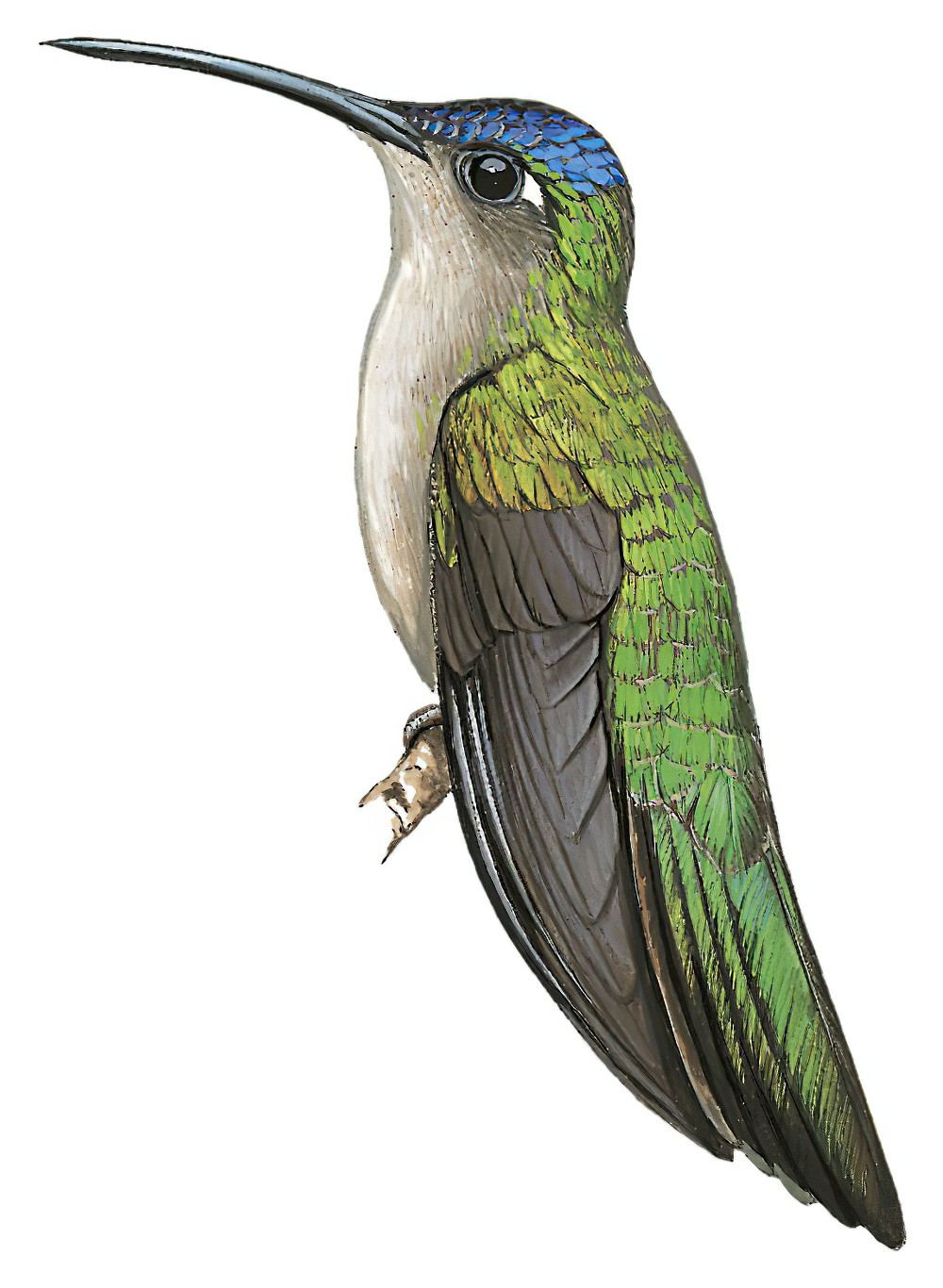Wedge-tailed Sabrewing / Campylopterus curvipennis

Wedge-tailed Sabrewing
SCI Name:
Protonym: Trochilus curvipennis Preis-Verzeichn.Saugeth.Vog.Mex.gesam. p.1 no.32
Taxonomy: Caprimulgiformes / Trochilidae / Campylopterus
Taxonomy Code: wetsab1
Type Locality: Mexico.
Author: Deppe
Publish Year: 1830
IUCN Status:
DEFINITIONS
CAMPYLOPTERUS
(Trochilidae; Ϯ Grey-breasted Sabrewing C. largipennis) Gr. καμπυλος kampulos curved, bent < καμπτω kamptō to bend; -πτερος -pteros
-winged < πτερον pteron wing (cf. specific name Trochilus campylopterus J. Gmelin, 1788 (= syn. Campylopterus largipennis)); "CAMPYLOPTERUS. Rostrum longiusculum, sub-arcuatum. Alæ falcatæ; remigum primarum scapis dilatato-compressis. Cauda rotundata, vel gradata. Types. 1. T. latipennis. 2. falcatus. Sw., Zool. Ill. ... Wings falcated, the shafts or scapes of the primary quills dilated and compressed." (Swainson 1827); "Campylopterus Swainson, Zool. Journ., 3, 1827, p. 358. Type, by subsequent designation, C. latipennis (Lath.) = Trochilus largipennis Boddaert. (G. R. Gray, List Gen. Bds., 1840, p. 13.)" (Peters, 1945, V, p. 18).
Var. Campilopterus.
Synon. Bombornis, Loxopterus, Pampa, Phaeochroa, Platystylopterus, Saepiopterus, Sphenoproctus.
campylopterus
Gr. καμπυλος kampulos curved, bent < καμπτω kamptō to bend; -πτερος -pteros -winged < πτερον pteron wing.
● ex “Oiseau-mouche à larges tuyaux de Cayenne” of d’Aubenon 1765-1781, pl. 672, fig. 2, “Oiseau-mouche à larges tuyaux” of de Buffon 1770-1783, and “Broad-shafted Humming-bird” of Latham 1783 (syn. Campylopterus largipennis).
curvipennis
L. curvus curved; -pennis -winged < penna feather.
SUBSPECIES
Wedge-tailed Sabrewing (Curve-winged)
SCI Name: Campylopterus curvipennis curvipennis
curvipennis
L. curvus curved; -pennis -winged < penna feather.
Wedge-tailed Sabrewing (Wedge-tailed)
SCI Name: Campylopterus curvipennis pampa
pampa
French name “Campyloptère Pampa” given to the Wedge-tailed Sabrewing of Yucatán by Lesson 1832, in the mistaken belief that it came from the interior of La Plata (i.e. the pampas, the plains of Argentina < Quechua pampas plains) (subsp. Campylopterus curvipennis).
UPPERCASE: current genus
Uppercase first letter: generic synonym
● and ● See: generic homonyms
lowercase: species and subspecies
●: early names, variants, mispellings
‡: extinct
†: type species
Gr.: ancient Greek
L.: Latin
<: derived from
syn: synonym of
/: separates historical and modern geographic names
ex: based on
TL: type locality
OD: original diagnosis (genus) or original description (species)












